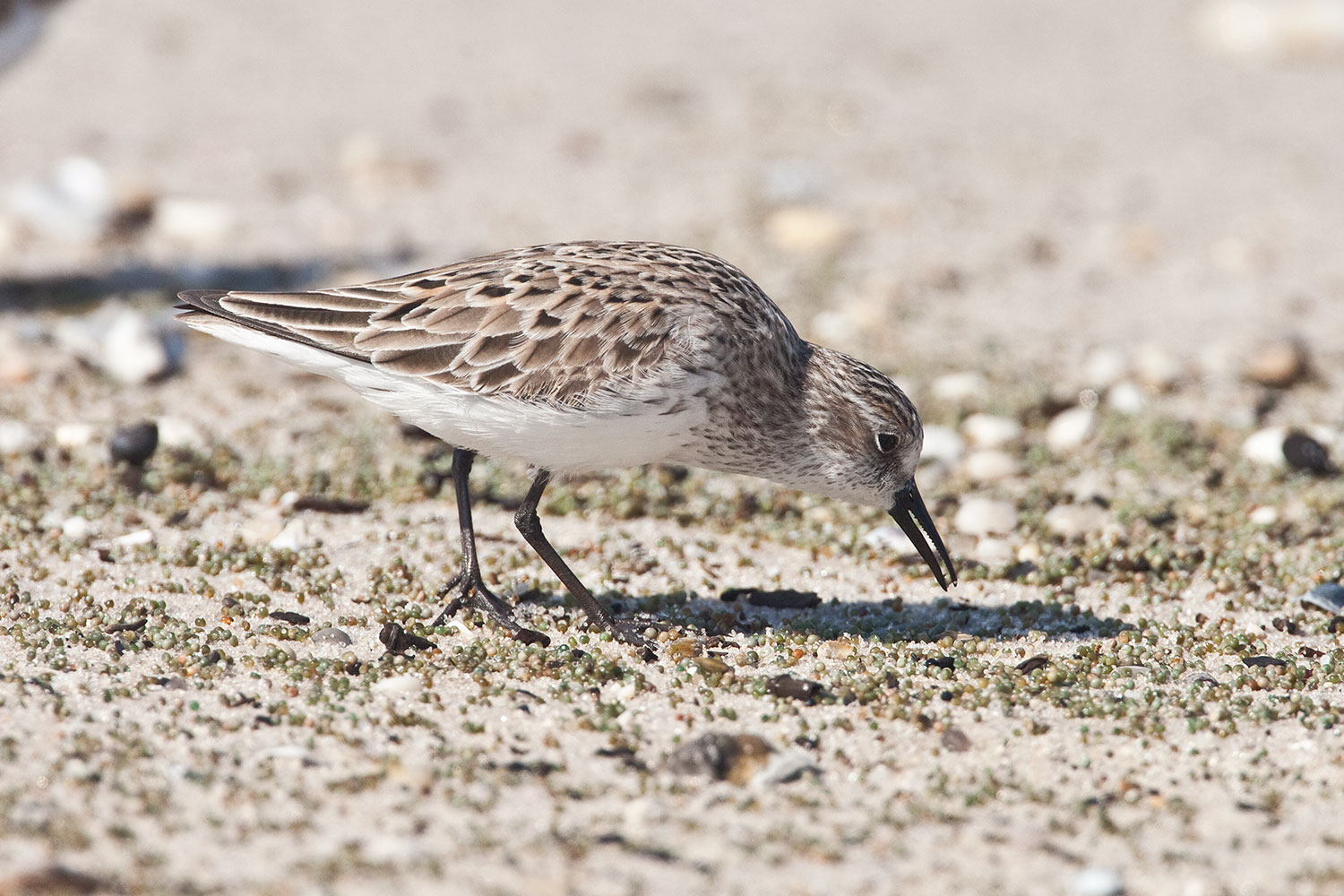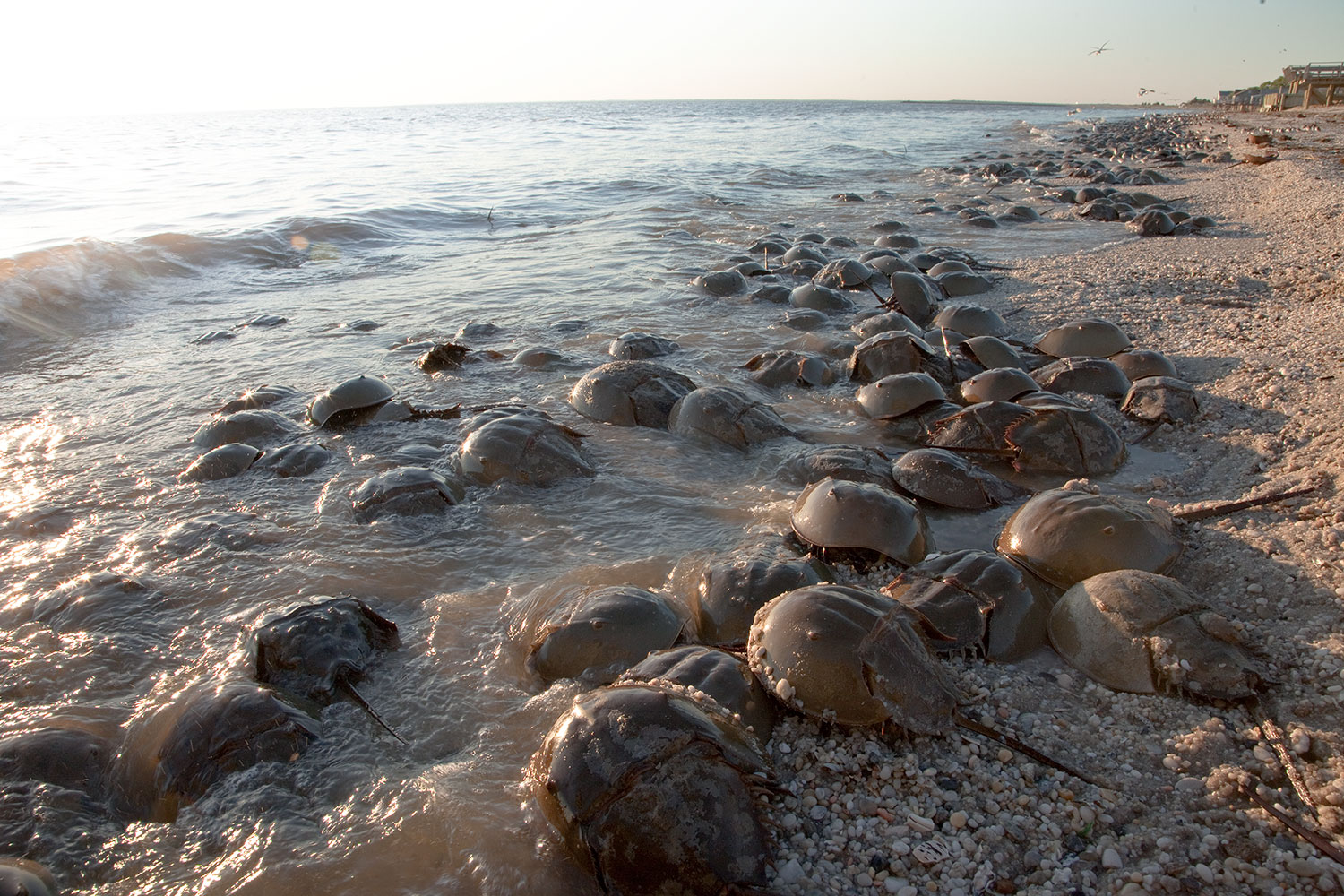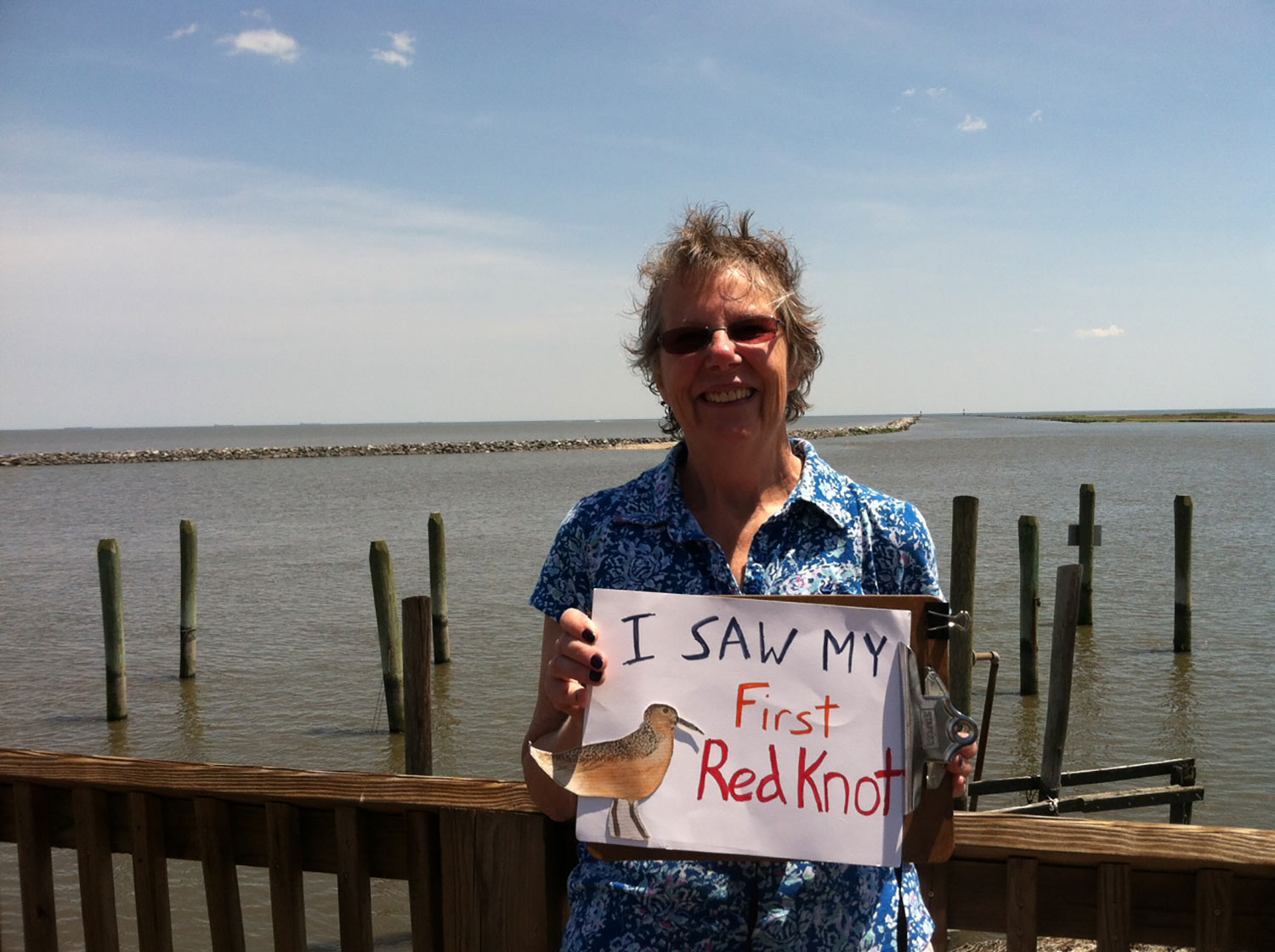Delaware Bay
The Story
May on the Bay
Each May and June hundreds of thousands of shorebirds log almost 10,000 miles flying from the southern tip of South America to the Arctic. Thin and tired, they take a break on the Delaware Bay to double their weight on tiny, green eggs. The average bird stays on the Bayshore for about 10 days, feeding all day long, before continuing on to breeding grounds in the Arctic.
Those green eggs are the eggs of one of Delaware Bay’s most unique animals, a living fossil – 420 million year old horseshoe crabs. The Delaware Bay serves as the spawning ground for the largest concentration of horseshoe crabs in the world. The horseshoe crabs has fascinated many a beach visitor, and also has great importance in the pharmaceutical and fishing industries.

The Story is Changing
Unfortunately, overharvesting of horseshoe crabs in the 1990s, has led to drastic declines in the number of crabs and eggs. Adding to the horseshoe crabs’ challenge is habitat degradation from extreme storms and being overturned by rough waves or stuck on rocks and other hazards.
With fewer eggs available on this critical stopover, species like the red knot, which is currently listed as threatened in NJ, have seen declines to as much as 80% of their population. The shorebirds are also threatened by human disturbance when they are interrupted from their feeding. Without action, the landscape of the Delaware Bay may be altered forever.

The Good News
Beach restoration, crab harvest restrictions, and bait replacements are slowing helping to recover both species – but you can help too – by preventing disturbance when shorebirds are feeding, and by rescuing stranded horseshoe crabs.
Learn how you can take action and be a good visitor to the Bayshore.

Bayshore Residents
The good news for the Bayshore is that residents know they have something unique in their backyard. In 2012, a survey of 400 Bayshore residents from DE and NJ:
- 95% believe that the Delaware Bay is important for the region’s ecological diversity and environmental quality.
- 69% of residents believe shorebirds are good for the region, and not just for attracting tourists for seasonal bird watching.
- 95% of residents say protecting shorebirds and horseshoe crabs is important.
If residents have an awareness of the importance of horseshoe crabs and shorebirds, the challenge is now to inspire action, as well as increase engagement and action with people from outside the area.
Delaware Bay photos: Jan Van de Kam, Andrew Harper, and Laura Chamberlin.




